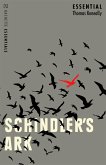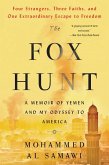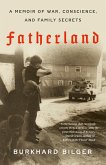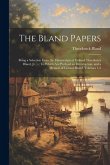This is an excellent biography of a well known WWI German war hero. People can find examples of his renown in American pop fiction. For example, Snoopy from the popular comics often flies his doghouse and attempts to shoot down the noble red baron, Manfred Von Richthofen. Of course, true to form, Snoopy's aero-doghouse adventures always ended in disaster for the flying dog ace, and the red Baron always flew away triumphantly. In truth, none of the Red Knight's victims ever flew away again. They either found their end in flames, or riddled with bullets, or smashed impacting the earth, or taken as a prisoner of war. This book offers some unique insights into the baron's life and one can see through letters to his mother and visits with his father (who held the rank of Major in the German army) what made the man tick. German life in the early 1900s was one of glory forged in war. It was an honor to die for one's country, and parents were proud to sacrifice their youth to defend their way of life. I would recommend this book to people who enjoy short books, or are interested in WWI, or people interested in German history, or those who like war books, or those who have interests in antiquated flying machines. There's a lot to enjoy in this book, and it truly maps out a life we are currently unfamiliar with. People truly did admire their enemies at one time. This book captures the combination of love, hate, reverence, fear, respect, and loathing that warfighters share for their enemies. (Jerimy Stoll) About the Author: Floyd Phillips Gibbons (July 16, 1887 - September 23, 1939) was the war correspondent for the Chicago Tribune during World War I. One of radio's first news reporters and commentators, he was famous for a fast-talking delivery style. Floyd Gibbons lived a life of danger of which he often wrote and spoke. Gibbons began as a police reporter on the Minneapolis Daily News in 1907, but was fired. He also worked for the Milwaukee Free Press and the Minneapolis Tribune. While working for the Tribune in 1910, he was arrested for cutting a telegraph line in Winter, Wisconsin to prevent other newspapers from reporting a story first. He moved to the Chicago Tribune in 1912. He became well known for covering the Pancho Villa Expedition in 1916. He became a London correspondent for the Chicago Tribune in 1917 and reported on the 1917 torpedoing of the British ship RMS Laconia, on which he was a passenger. The Chicago Tribune appreciated his keen eye for detail, and vivid splashy style. It sent him to England to cover World War I. As a correspondent at the Battle of Belleau Wood, France. Gibbons accompanied the Fifth Marines where his account of the battle that he submitted violated wartime censorship by mentioning that he was serving with the U.S. Marine Corps. Gibbons' colourful prose added to the reputation of the Marines. Gibbons lost an eye after being hit by German gunfire at Château-Thierry in June 1918 while attempting to rescue an American marine. Always afterwards he wore a distinctive white patch on his left eye. He was given France's greatest honor, the Croix de Guerre with palm, for his valor on the field of battle. ... (Wikipedia.og)
Bitte wählen Sie Ihr Anliegen aus.
Rechnungen
Retourenschein anfordern
Bestellstatus
Storno









